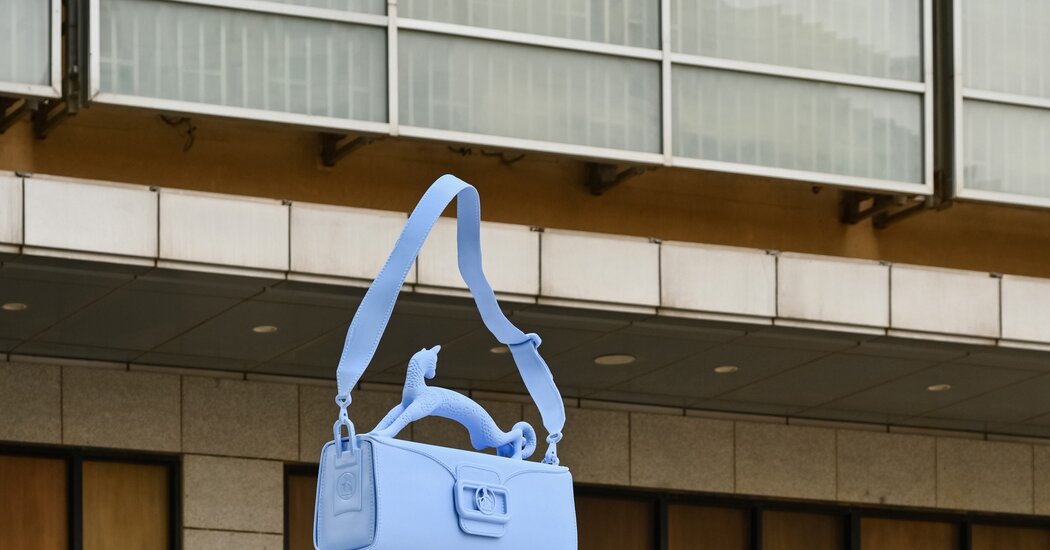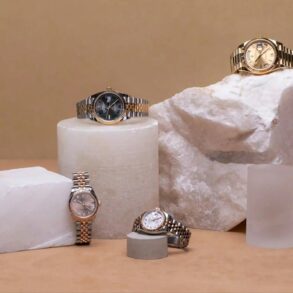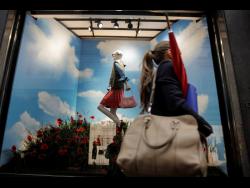
The boundaries between art, fashion and luxury seem to be melting away. That’s great for brands, but what about artists — and the art?
The 11-foot sculpture looks like something out of a comic strip: a luxury handbag perched on skinny legs and matched with high-end sneakers. The work is by the Austrian-born artist Erwin Wurm, and it represents accessories from the collections of Lanvin, the French fashion house.
“Desire” (the title of the sculpture) was commissioned by Lanvin and unveiled in Beijing in early April. It will travel to six other Chinese cities, including Shanghai — where, in June, a Wurm solo exhibition opens at the Fosun Foundation: the nonprofit arm of the Fosun Group, Lanvin’s majority owners.
“I made this piece because it fit into my series,” Wurm, 69, said in a phone interview, referring to his “walking bag” sculptures, which parody women’s contemporary passion for handbags. “I reduce females to long legs and shoes and handbags. That’s a statement, but it’s a critical statement.”
The artist acknowledged that the Lanvin sculpture commission might appear to some as if “I created something for a brand,” but he said that he agreed to it, realizing that “it can be dangerous, or it can be good.”
When artists first started doing large-scale collaborations with brands a couple decades ago, Wurm noted, “everybody was shocked.” Today, he said, brands have become the modern-day versions of “the nobility or the kings or the pope: the people who gave commissions to the artists.”
“That’s our world,” he added.
Worlds Colliding
“Desire” is among the latest examples of the escalating overlap between art and the world of fashion and luxury. Artists are designing handbags and accessories for luxury brands. Luxury brands are building museums and putting on art exhibitions. Auction houses, which since the 18th century have been prestige marketplaces for fine art, are now selling bags, sneakers and streetwear.
For fashion brands, it’s a win-win: Associating with art elevates them from being seen as purely commercial ventures. The hope is that their high-end products will be likened to works of art.
The artists benefit financially and raise their profiles, becoming known to wider and more global audiences. Yet depending on the frequency and the extent of the collaborations, there are credibility hazards: the risk of being perceived as selling out for money.
Lanvin’s deputy general manager, Siddhartha Shukla, said brands nowadays were much more than the fashion and accessories collections that they brought out every season.
He noted that Lanvin, for example, was “a brand with an incredible heritage” which had moved into “urban culture, the world of rap artists and musical artists, the world of teenage TikTok creators, the world of K-pop stars.” The brand, he said, had “pervaded many of these subcultures,” and “must recognize that and must respond to it.”
Lanvin Lab — a division of Lanvin the company that started last year, after Shukla’s arrival — was designed to promote creative collaborations such as the sculpture commission from Wurm.
“Artification”
The marriage of art and fashion is hardly new. In the 1930s, the designer Elsa Schiaparelli teamed up with the artist Salvador Dalí to produce such items as a compact powder case shaped like a telephone dial, and a long dress with a giant lobster down the front. In the 1960s, Yves Saint Laurent designed cocktail dresses replicating Piet Mondrian’s signature grids.
Yet on the whole, “for most of the 20th century, art and fashion were separate,” Don Thompson wrote in his 2021 book, “The Curious Economics of Luxury Fashion.” “Art was important, and fashion was frivolous.”
“Today, collaborations between brands and artists are common,” he added, describing a process academics and researchers have labeled “artification,” whereby “luxury fashion providers want to position their products closer to art, because art represents taste and culture.”
In a phone interview, Thompson gave an example. “If you were to spend $25,000 on a handbag, your friends would consider it shocking and frivolous,” he said. “If you spent $25,000 on a work of art, you are a collector, you’re a patron of the arts.”
“Fashion would like to absorb that view of what they do as something independent of commerce,” he added.
At the same time, Thompson said, “artists see paid collaborations the way that actors see paid commercials.” And given that the luxury goods industry is much bigger than the art industry, he noted, an artist’s work “gets displayed to a hugely bigger audience.”
Art itself has been produced in many multiples for a long time. It has “gone through a century of mass production,” said Daniel Birnbaum, a curator who is the artistic director of the digital art production platform Acute Art. He previously ran the Moderna Museet in Stockholm, and was the artistic director of the 2009 Venice Art Biennale.
“The introduction of photography and technologies of reproduction transformed not only how an art piece can reach an audience,” he said, but also just what an art piece is. “If it used to be that unique object, it could suddenly be in an edition of 40,” he added.
Mass production became all-pervasive with Andy Warhol, the Pop Art pioneer, who incorporated images from advertising, billboards, celebrity magazines and other mass media into his art. In the course of his lifetime, Warhol produced more than 9,000 paintings and sculptures and nearly 12,000 drawings, according to his foundation. Though they came in multiples, Warhol’s works are among the most costly and coveted in the world: His “Shot Sage Blue Marilyn” (1964) sold for $195 million in 2022.
Dawn of a New Age
Art and mass production have fused even more brazenly since the turn of the millennium, as more and more artists have started designing products for brands. Among the first brands to pioneer this practice was Louis Vuitton, especially under its then artistic director Marc Jacobs. In the Spring 2003 collection, the company released handbags and a range of other leather accessories with patterns designed by the Japanese Pop artist Takashi Murakami.
Murakami would go on to do three more collaborations with Vuitton. In his 2007-8 solo exhibition at the Museum of Contemporary Art in Los Angeles, he installed an actual Louis Vuitton shop with handbags on sale. The shop was “hard to categorize,” Jacobs said in 2008 in conversation with Interview magazine. “Isn’t that what the state of art is right now? It’s not so easy to define.”
Many other artists have since been enlisted by Louis Vuitton as designers for hire, including Richard Prince, Jeff Koons, and Yayoi Kusama.
Louis Vuitton’s parent company LVMH is also a longstanding sponsor of art exhibitions. In 2014, it opened the Fondation Louis Vuitton: a vast art space in western Paris designed by the architect Frank Gehry, which has programmed a series of blockbuster shows, such as the recent Mark Rothko retrospective, which drew 852,000 visitors.
The auction houses are catching the fashion bug, too, and since the turn of the millennium, they have started adding high-growth luxury categories to their sales. In 2023, Sotheby’s posted sales of $7.9 billion, almost a third of that total generated by luxury products (meaning jewelry, watches, handbags but also classic cars, real estate, sports memorabilia, streetwear and spirits).
Josh Pullan, head of the global luxury division at Sotheby’s, said luxury auctions were “an unbelievable entry point for new clients,” as half of the buyers and bidders at those auctions were new to Sotheby’s.
Sotheby’s has started mixing all of its sales categories in some of its auctions. A February sale called “The One” offered everything from Queen Marie Antoinette’s carved console table to Michael Jordan’s own Air Jordan sneakers.
Will the luxury side cannibalize the fine art side?
“No, I don’t think it’s a zero-sum game: I think it’s 100 percent complementary,” Pullan said.
What is certain is that the two worlds of art and fashion are absolutely not comparable in size. “The fashion world is much bigger, and much more powerful,” said Birnbaum, the London-based curator, noting that the world’s richest person (worth more than $200 billion, according to the Forbes annual ranking) was Bernard Arnault, the chairman and chief executive of LVMH.
Nonetheless, Birnbaum added, the artist is seen as important, and persistently being courted by brands. “There’s something in the signature itself: it still has that magnetism.”
The trick, he said, was to retain it. If artists who are “huge brand names” do too many fashion collaborations, “there’s a risk that they lose that magnetism, that magic.”
“It’s a risk for them,” he said. “It’s not a risk for art.”
This post was originally published on this site be sure to check out more of their content.




